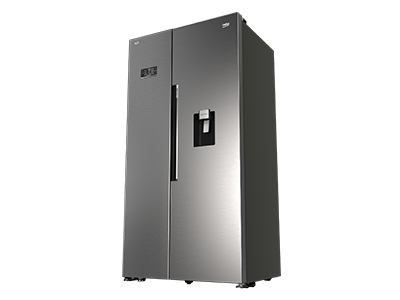Need more support?
Find FAQ's, video guides, articles and more.
No results found!
Everything you need to know about
I need help with

All fridges work optimally in specific ranges of ambient temperatures. These ranges are called climate classes. Your fridge will operate less effectively in a place which is too hot or too cold for its tolerance levels. The three climate classes and their range of temperatures are:
- Sub Normal SN +10 °C to +32 °C
- Normal N +16 °C to +32 °C
- Sub Tropical ST +18 °C to +38 °C
- Tropical T +16 °C to +43 °C
Some Beko fridge freezers can work in lower temperatures than the climate class that has been listed. To see the exact lowest ambient temperature your Beko fridge freezer will work in, check your user manual. If you’re having trouble finding your manual, download it here using your product’s model number.
Most Beko refrigerator models feature reversible doors. Please consult your user manual to see whether your appliance does or not. To change the direction of your refrigerator's door, follow the instructions in your user manual. If you’re having trouble finding your manual, download it here using your product’s model number.
The recommended temperature is around 4 °C to 5 °C for the fridge and -18 °C for the freezer compartment.
No-frost refrigerators do not need manual defrosting. If your refrigerator does not have the no-frost feature, you’ll have to defrost it regularly.
Check the freezer compartment for frost build-up. If the inner walls have visible frost on them, your appliance may be working more than necessary to achieve or retain the ideal temperature. In this case, you’ll have to manually defrost the freezer compartment.
It is recommended that you defrost your refrigerator's freezer unit approximately once a month or when the frost build-up reaches a thickness of 0.5 centimetres.
For more information regarding defrosting your freezer, consult your user manual. If you’re having trouble finding your manual, download it here using your product’s model number.
Beko fridge freezers with 3 Zone No Frost and NeoFrost™ Dual Cooling Technology prevent ice build-up so that you won’t have to defrost manually. Keep it in mind that your appliance may run longer when the automatic defrost function is in use.
Before getting started, make sure that your fridge is unplugged, and the door shelves are empty. Depending on the model of your fridge, you can either loosen the upper hinge screws and then tighten them while maintaining the correct position or you can use the adjusting nuts and bolts connected to the doors.
To adjust the doors vertically, loosen the fixing nut at the bottom. Screw the adjusting nut according to the position of the door. Finally, tighten the fixing nut into its final position.
To adjust the doors horizontally, loosen the fixing bolt on the top. Screw the adjusting bolt on the side according to the position of the door. Tighten the fixing bolt on the top for the final position.
For more information on how to align your fridge doors, consult your user manual. If you’re having trouble finding your manual, download it here using your product’s model number.
Ideal refrigerator temperatures are 4 °C or 5 °C for the fridge and -18 °C for the freezer compartment.
The best way to check the temperature inside your appliance is with an accurate thermometer. Place the thermometer inside a cup of water and put it inside the fridge compartment.
To check freezer temperatures, do the same with the thermometer inside alcohol or cooking oil (because water would freeze).
When the refrigerator doors are opened, the hot and humid air outside the appliance meets the colder and drier air inside. This causes the water vapor in the warmer outside air to condense and then freeze, sticking to the interior walls of the freezer compartment. Frost build-up inside the freezer will make your refrigerator run for longer and decrease its performance.
To defrost, pull the mains plug out of the electrical socket. Place bowls inside the freezer and some towels where water from the melting ice gathers. Leave the freezer door open. You can speed up the process by placing a bowl of warm water inside your freezer.
Beko fridge freezers with 3 Zone No Frost and NeoFrost™ Dual Cooling Technology prevent ice build-up so that you won’t have to defrost manually. Keep it in mind that your appliance may run longer when the automatic defrost function is in use.
The best way to keep your food safe during a power cut is leave it in the refrigerator with the doors closed.
Beko refrigerators are designed to keep food frozen for 10 to 18 hours in the event of a power loss. This is much longer than what you might achieve with other methods, such as using cool bags. Keep the door openings to a minimum during this time.
You can find the exact time your refrigerator will keep food frozen, consult your user manual. If you’re having trouble finding your manual, download it here using your product’s model number.
If the power outage lasts longer than the specified time, remember that you should not refreeze thawed food.

Whether you need product advice, went to purchase accessories or simply want to give feedback - we're here for you.
(888) 352-2356 Monday through Friday 8 a.m. - 5:30 p.m. CSTFind FAQ's, video guides, articles and more.